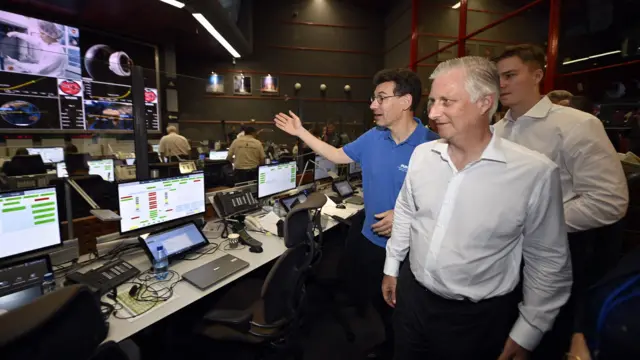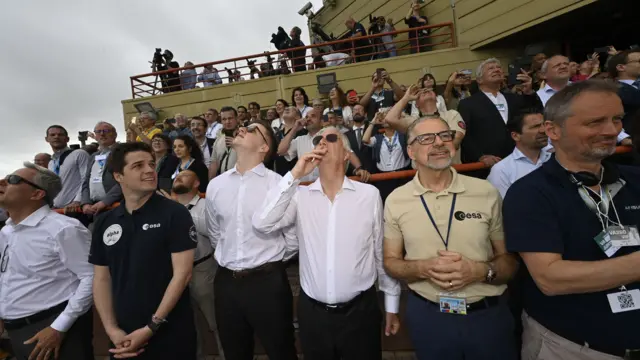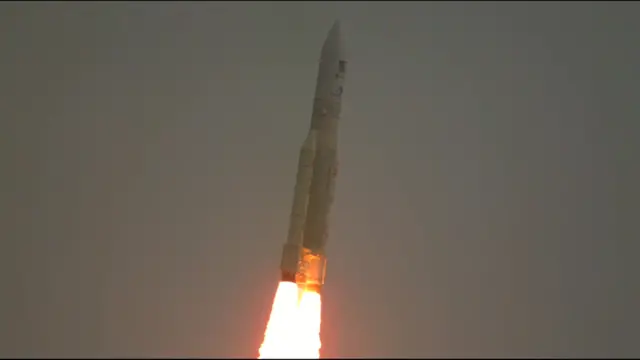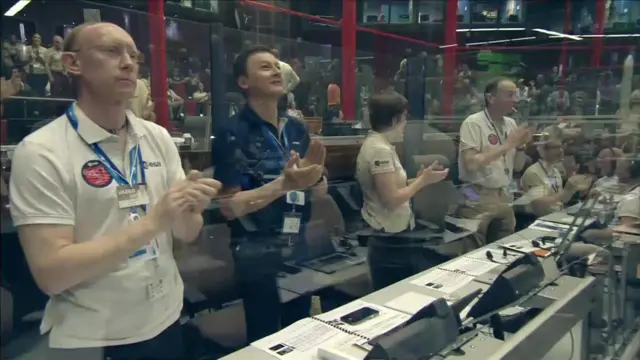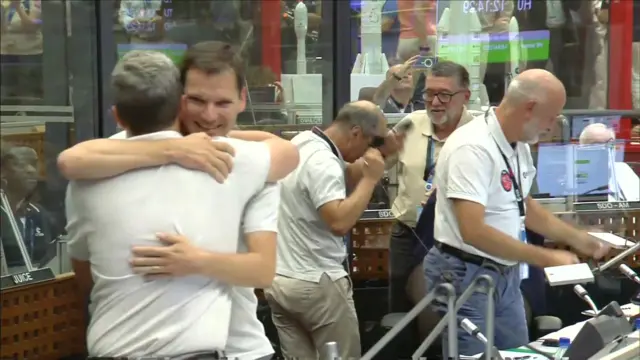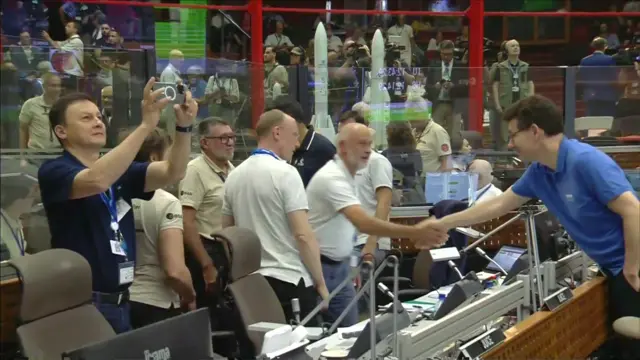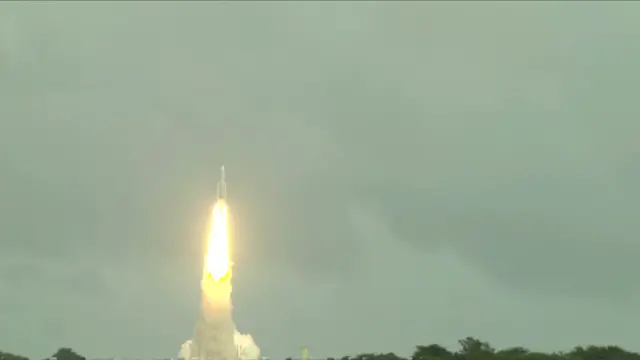Our mission is coming to an endpublished at 15:42 BST 14 April 2023
 Jamie Whitehead
Jamie Whitehead
Live reporter
Phew, what a couple of whirlwind hours those have been!
Thanks for joining us as we followed the launch of the Jupiter moons mission, one of the European Space Agency's most ambitious ever.
"Juice is coming, Jupiter! Get ready for it," announced Andrea Accomazzo, the operations director of ESA's mission control in Germany, once the satellite was sent skyward on an Ariane-5 rocket.
"The Juice is loose!" declared our science correspondent Jonathan Amos, with today's blast off making up for the disappointment of yesterday's postponement.
But there's still a long way to go. It will take eight years for the satellite to reach the Jupiter system, travelling four billion miles from Earth.
As our science editor Rebecca Morelle explained, today's launch is the halfway point of the mission.
But the ESA will be breathing a sigh of relief to see lift-off, and we look forward to updating you on the satellite's arrival (hopefully) in 2031.
Today's coverage was brought to you by Marita Moloney and myself, as well as our colleagues Thomas Mackintosh, Aoife Walsh, Ece Goksedef and Gem O'Reilly.
Shall we see you all again in eight years?

